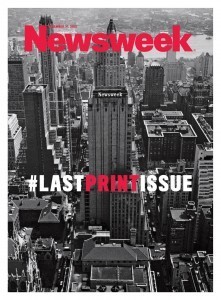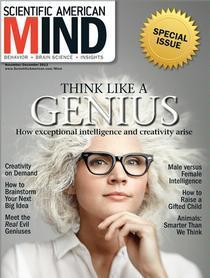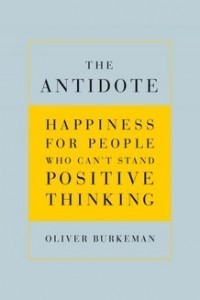Daniel H. Pink's Blog, page 4
December 28, 2012
Want 5 freebies? You’ve got 48 hours.
 A quick reminder for those who haven’t yet pre-ordered To Sell is Human — and therefore are missing out on our 5 great giveaways.
A quick reminder for those who haven’t yet pre-ordered To Sell is Human — and therefore are missing out on our 5 great giveaways.
The offer ends at Noon EST on Sunday December 30, 2012.
You can find the details on what you get and what you need to do on the First Mover page.
If you’re among the nearly 10,000 people who’ve already preordered the book, thank you. By now you should have the 23-page workbook, the two Office Hours interviews, and the instructions for our exclusive New Year’s Day webinar. And as you can see above, the elves at Pink, Inc, began mailing out the custom notebooks and signed bookplates a few days ago.
If you’ve got questions about pre-ordering, signing up for the giveaways, or anything else (within reason), email me directly. Meantime, here’s to a happy and healthy 2013!
* * *
SOME LINKS FOR PRE-ORDERING
Pre-order from Amazon.com (38% off)
Pre-order from BN.com (37% off)
Pre-order from IndieBound
Pre-order from iBooks
Pre-order from 8CR
December 27, 2012
Evaluating my 2012 predictions: The good, the bad, and the hideous
 Three hundred and sixty-five days ago, I offered 10 predictions for the year that ends on Monday. How’d I do?
Three hundred and sixty-five days ago, I offered 10 predictions for the year that ends on Monday. How’d I do?
In the name of transparency and feedback, I’ve listed my 2012 predictions below — along with a short evaluation indicated in blue.
“1. American Politics. In the 2012 presidential race, one candidate will win the popular vote but the other the Electoral College.”
EVALUATION: Dead wrong.
“2. Economics, I. On Election Day 2012, the US employment rate will be 8.1%. (Job growth will improve, but more discouraged workers will re-enter the labor force, pushing up the rate.)”
EVALUATION: Not bad. The unemployment rate on Election Day was actually 7.9%.
“3. Economics, II. In the 1970′s and 1980′s, America had U-shaped recoveries. In the 1990′s, we had a “Goldilocks recovery” (not too hot, not too cold). What’s happening now will be known as the “tortoise recovery” — heading in the right direction, but moving very, very slowly.”
EVALUATION: Pretty good. The American economy added 1.5 million new jobs, a chelonian pace and far slower than in previous recoveries.
“4. Business, I. A year from today, two out of these three entities will no longer exist: Groupon, Kodak, Newsweek.”
EVALUATION: Not bad. Newsweek just printed its last issue. Kodak entered bankruptcy. Meanwhile, Groupon’s stock is down 82% from its IPO and still hasn’t turned a profit.
“5. Business, II. The hot new investment area for venture capitalists will be synthetic biology.”
EVALUATION: Mostly wrong. There’s been some action, but not much.
“6. Technology. The year’s must-have technology product won’t be the iPad 3 or iPhone 5, but the Lytro camera.”
EVALUATION: Wrong. I couldn’t find sales figures, but by all accounts the response to the Lytro has been tepid.
“7. International affairs, I. The next big popular uprising — 2012′s version of Arab Spring — will take place in China.”
EVALUATION: Dead wrong.
“8. International affairs, II. The Cameron-Clegg coalition government in the UK will not survive through November.”
EVALUATION: Dead wrong.
“9. Culture. The year’s big novel will be Billy Lynn’s Long Halftime Walk by Ben Fountain. (I read the manuscript last week. It’s amazing — Tom Wolfe meets Joseph Heller.)”
EVALUATION: Not bad. The book wasn’t a gargantuan hit, but it landed on more “Best of 2012″ lists than almost any novel published this year, was a National Book Award finalist, and got snapped up by Hollywood.
“10. Sports. The Washington Nationals will make the 2012 National League playoffs. You heard it here first.”
EVALUATION: Nailed it, even though the playoffs themselves ended in heartbreak. Two words for 2013: World Series.
December 26, 2012
30 Life Lessons From 1,000 Older Americans
 Back in April, I blogged about 30 Lessons for Living: Tried and True Advice from the Wisest Americans, which turned out to be one of my favorite books of 2012.
Back in April, I blogged about 30 Lessons for Living: Tried and True Advice from the Wisest Americans, which turned out to be one of my favorite books of 2012.
Cornell human ecology professor Karl Pillemer spent five years interviewing more than one thousand Americans older than 65. Then he distilled their wisdom into lessons on careers, marriage, parenting, and other topics. What’s remarkable to me isn’t just the surface wisdom of their advice, but how much what they recommend comports with what social scientists have discovered in the last 20 years about human flourishing.
Because it’s a season of reflection, and because the book is now available in paperback (Amazon, BN, IndieBound) I asked Professor Pillemer to answer a few questions for Pink Blog readers.
***
1. Why do people tend to act on these principles so infrequently if elders, social, science, and our guts tell us they’re true?
Research shows it is very difficult for younger people to take the long view when they are submerged in the flow of work and family life. In my book I refer to the “middle-aged blur,” in which 20 or more years appear to pass in an instant. Younger people often focus on short-term gain without looking at long-term consequences. This is why I believe listening to the oldest Americans is so important – we can learn to adopt a long-term view by listening to people who have lived their lives.
2. As someone who admittedly suffers from “middle-aged blur,” I wonder if there’s a way to grasp these lessons sooner rather than later in life? Or is coming to these conclusions on one’s own simply part of the aging process and part of being human?
The best way is simply this: listen to older people and ask their advice. Our elders are excellent at conveying this practical wisdom very convincingly. We find that younger people exposed to the key insights of older Americans do indeed change their behaviors. They do things like seek work for its intrinsic rewards rather than external ones; create a focus on rewards from people and experiences over things; and develop a more savoring and grateful approach to daily experience
3. Who among us does not have a grandparent who claims they walked five miles to school and back every day — all of it uphill? But judging from your interviews, the generation of people you talked to actually did endure a lot of hardships that more affluent generations don’t see today. Is suffering the key to their wisdom, and if so, should we seek it out?
The elders do not suggest that we go about looking for opportunities to suffer; rather, they suggest that many experiences that involve great difficulty also provide irreplacable opportunities for learning. So they would recommend seeking challenging experiences and facing them with courage and resolve. It is precisely these situations that lead to what we call wisdom.
4. You write that elders’ wisdom often “upends contemporary conventional wisdom….it is in this challenge…that the true value of their wisdom lies.” That seems paradoxical — we usually think of seniors as being almost painfully conventional, and of young people as being the radicals. How do you explain this?
Actually, research shows that people do not necessarily become more conservative or set in their ways as they get older. The biggest surprise for me in our interviews was instead how much America’s elders endorse risk. Looking back, they want to convey a message to younger people that is summed up in a quote in our study from an 87-year old: “Don’t waste your life – it’s too precious.” Similarly, an 89 – year old told me “Life is short and you have to cram as much into it as you possibly can. It’s ‘sorry you didn’t rather than sorry you did’ – am I right?” Over and over, they assert, sometimes vehemently, that younger people should “say yes,” embrace risk, and beware of living life “in a box.” They say this especially regarding your career; as a former entrepreneur told me, “Unless you have a compelling reason to say no at work, you should always say yes.”
5. The social trend for the past few decades, particularly in the West, has been away from multi-generational living. Can you imagine any force or circumstances that would reverse this trend?
We must do all we can to reverse this trend. There are many intergenerational programs that bring younger and older people together. All of us need to make more of an effort to reach out to older people and bring them back into the mainstream of life. One great place to intervene in this trend is the media. One study found that only 2 percent of prime time TV characters are identifiably over 65, and most of those are portrayed negatively (think Grandpa Simpson). The absence of positive images of aging in the media promotes prejudice and age segregation, so there is a good place to start changing attitudes.
6. If you don’t mind offering some advice of your own, could you tell our readers what one thing they could do today either to impart the wisdom of their age, or imbibe the wisdom of their elders?
It may not sound like a profound change, but there is one thing almost anyone can do. Specifically, a first step in breaking down the age barriers is to talk with one another. I strongly recommend that everyone spend some time asking older people in your social network the kinds of questions that were asked of the elders in the Legacy Project. Placing older friends and relatives in the role of advice-giver is empowering for them, and enlightening for younger people. So the best action is in fact pretty simple. The wisdom of our elders is readily available to us. All we have to do is ask.
December 14, 2012
The 24 rule for new ideas
 In his recent New York Times interview with Adam Bryant, venture capitalist Tony Tjan, CEO of CueBall, offers an amazingly simple and sensible approach for responding to new ideas.
In his recent New York Times interview with Adam Bryant, venture capitalist Tony Tjan, CEO of CueBall, offers an amazingly simple and sensible approach for responding to new ideas.
As he puts it:
“When someone gives you an idea, try to wait just 24 seconds before criticizing it. If you can do that, wait 24 minutes.”
And then, he suggests, try to wait 24 hours.
Makes sense to me. What do you think?
Please wait at least 24 minutes before leaving your comment.
December 13, 2012
Emotionally intelligent bubble wrap
From NPR’s Robert Krulwich comes the tale of how a bus stop in Milan is making the wait for public transportation more bearable. The answer: Bubble wrap — cut into different sized sheets based on how long you expect to wait.
Occupied time, it turns out, feels shorter and less stressful than unoccupied time. So anything that keeps people’s minds and fingers doing something will make the wait seem less excruciating. In other words, who needs emotionally intelligent signage when you’ve got tactilely alluring bubble wrap?
NPR has more photos. An Italian conceptual artist is behind this clever scheme. And MIT’s Richard Larson is the man to see to understand the mathematics and psychology of lines and waiting. (One finding: The more people behind you in a line, the less like you are to try to switch queues.)
November 30, 2012
5 freebies for first movers
 Tick, tick, tick. In just 30 days, I’ve got a new book coming out. It’s called To Sell is Human – and I think you’ll like it. (BTW, you can now read the 6-page Introduction here.)
Tick, tick, tick. In just 30 days, I’ve got a new book coming out. It’s called To Sell is Human – and I think you’ll like it. (BTW, you can now read the 6-page Introduction here.)
Already several thousand people have pre-ordered the book. So to thank them — and everyone else who follows their excellent example – I’ve put together a great package of giveaways for people who order the book before publication date. (As many of you know, pre-orders have become crucial in building momentum for books and their ideas, which is why I’m so grateful to folks who step up early.)
WHAT YOU GET
Anybody who orders the book — hardcover or e-book, from any bookseller — before December 30, 2012, will receive the following:
A free 20-page PDF workbook, based on To Sell is Human, giving you a two-week plan to get better at selling and a head start on those who won’t have the book until January.
A free New Year’s Day webinar – with an exclusive look at the ideas, people, and publications I’ll be watching in 2013 along with a chance to ask me questions. (We did this for the launch of Johnny Bunko a few years ago – and it was one of the best-received events I’ve ever done.)
A free customized Field Notes memo book – my favorite notebook of all time, printed in a (very) limited edition batch commemorating publication of the book.
A free To Sell is Human bookplate, signed and numbered, to slap inside your book.
A free audio download of a one-hour special edition of Office Hours (which won’t be available anywhere else) featuring exclusive interviews with Robert Cialdini, author of the classic book, Influence, and Adam Grant, the Wharton professor whose not-yet-published study is one of the biggest pieces of news in To Sell is Human.
WHAT YOU NEED TO DO
Once you pre-order the book, or if you’ve done so already, just forward your receipt in any form to [email protected]. We’ll verify it and then send you instructions on how to access your goodies when they’re ready.
That’s it.
SOME LINKS FOR PRE-ORDERING
Pre-order from Amazon.com (38% off)
Pre-order from BN.com (37% off)
Pre-order from IndieBound
Pre-order from iBooks
Pre-order from 8CR
* * *
Thanks, thanks, thanks for your early support.
November 28, 2012
Emotionally intelligent signage: Coffee, poop, and vintage biker chicks
Folks, it never stops. Each week brings more emotionally intelligent signage from readers around the world. One of these days I’m gonna set up a Tumblr dedicated to this topic. Until then, here are four diverse signs we thought you’d enjoy:
Eileen Can shows how one coffee joint guards against seared laps and eager plaintiffs’ lawyers:
Brad Waters sends this example of how the city of Chicago tries to keep its beaches clean:
And Michael Edelstone offers two traffic signs — one a modern response to road rage from Jed Rogers Design Studio:
The other a nice vintage example:
November 27, 2012
Genius vs. Talent
 The latest issue of Scientific American Mind, which I read during a vacation last week (yes, I’m an exciting guy), takes on the subject of genius.
The latest issue of Scientific American Mind, which I read during a vacation last week (yes, I’m an exciting guy), takes on the subject of genius.
“Genius” is one of those freighted words, something we consider exceedingly rare and overwhelming innate. But after reading SciAm’s package of articles, one of my takeaways is that genius in a less grandiose sense is as much about mindset as it is about ability or talent or gifts.
Two quotations in the stories stuck with me. The first comes from Mihaly Csikszentmilhalyi, who wrote:
“The unifying similarity among geniuses and innovators is not cognitive or affective but motivational. What is common among them is the unwillingness or inability to strive for goals everyone else accepts.”
The other is from Arthur Schopenhauer:
“Talent hits a target no one else can hit; genius hits a target no one else can see.”
Worth pondering.
November 19, 2012
Anybody want to see a 2-minute video preview of my new book?
BTW, if you pre-order the book (Amazon, BN.com, IndieBound), please hang on to your receipt. Next week, we’ll be announcing an awesome package of giveaways for folks who order before the December 31 publication date.
November 16, 2012
Can negative thinking be a positive?
Do we try too hard to be happy? Has the relentless pursuit of happiness and positivity poisoned our ability to live a meaningful life?
Oliver Burkeman thinks so. And he’s given us The Antidote (Amazon, BN.com, IndieBound) – a smart and entertaining new book that offers what he calls a “negative path” to happiness.
Because Pink Blog readers are interested in the broad array of subjects Oliver writes about in this book, l asked him to answer a few questions. Here’s our interview:
1. You call our culture’s “fixation on positivity” a “disease.” But the cure you prescribe — drawn from the teachings of the Stoics, the Buddha, and other deep thinkers — is pretty challenging stuff. Where’s the harm in positive thinking if it makes us happy?
Well, I’m not sure that it *does* make us happy: there’s now plenty of psychological evidence to suggest that trying to make yourself think positive thoughts can backfire, leaving people feel worse. More practically, this focus on struggling to achieve the “right” emotional state – ie., constant grinning optimism — is a distraction from taking the actions that matter. (Plus, those people are pretty annoying.) The researchers and thinkers I met while researching my book, and the personal experiments I undertook, approached the matter differently. What if we learned to accommodate, even harness, uncertainty, insecurity, pessimism and failure, instead of treating them like they’re radioactive?
2. “Goal Crazy” might be the most provocative chapter in the book. You could fill a library with all everything that’s been written on achieving personal and professional goals, and yet you say that this relentless focus on goals is misplaced. What’s so bad about setting, working toward, and achieving goals?
There’s a role for goals. But the “overpursuit” of goals leads to all kinds of hazards. One major pitfall is that “you can never change only one thing” — and so focusing on a single variable risks distorting many others. (We probably all know people who’ve pursued a wealth goal, say, at the expense of their personal relationships, but that’s only the most obvious example.) Another is that rigid plans for the future mean we don’t hear when opportunity knocks softly. Research among successful entrepreneurs by Saras Sarasvathy, for example, suggests they choose what she calls “effectuation”, instead of firm business plans. They don’t behave like gourmet chefs, visualizing a perfect dish and then sourcing the ingredients. They’re more like time-pressed home cooks, checking what’s in the cupboard, then exploring ways to combine the resources at their disposal — ideas, materials, people. Then they just start, adjusting their target as they go: “ready, fire, aim”, not “ready, aim, fire.” (Another tip: choose “process” goals over “outcome” goals. Not “I’ll write a great novel”, but “I’ll do 45 minutes every weekday”.)
3. We’ve probably all seen the studies showing that people from some of the poorest nations on earth consistently rank higher in happiness than citizens of wealthy countries. In the book, you offer a counterintuitive explanation for why that may be so — could you briefly explain?
This is such a fraught topic. I don’t mean to imply that poverty and disease are somehow unproblematic, simply because there’s a higher incidence of depression in Manhattan than in some African slums. But what you realize when you visit places like the Kenyan township of Kibera outside Nairobi, and study the research evidence, is that people living in extremely fragile conditions do have one advantage. They’re forced to face the fundamental insecurity of existence. They don’t have the option of mistakenly believing that the next pay raise, the next promotion or a bigger house, will finally make them happy. They’re compelled instead to find ways to live with insecurity — and to build the strong relationships with family and neighbors that are a crucial ingredient of wellbeing. We mustn’t romanticize their situation. But as we’ve seen on the US east coast recently, all our lives, in different ways, are suffused with insecurity. Do we really want to embrace a philosophy of happiness based on trying to ignore that?
4. At the end of The Antidote, you talk a little about some of the techniques that have been most helpful to you. What continues to stick with you personally from your research? What could readers of this blog begin doing today — within the next hour, even — to get started on a more satisfying path?
If you’re feeling daring, do what I did and deliberately embarrass yourself in public — a technique adapted from Stoicism that will transform your perspective on plunging into uncertain or scary situations. (Choose something legal and considerate of others! I spoke the names of stations on the London Underground out loud.) Alternatively, pick a project you’ve been procrastinating on, choose a useful next action, and — this is the critical part — *don’t* try to stamp out the associated negative feelings of reluctance or fear or uncertainty. Acknowledge them, then act anyway. Another thing I’ve turned into a daily habit, albeit haltingly, is meditation. Learning to observe your thoughts and emotions without manipulating them is the opposite of positive thinking: paradoxical though it sounds, getting comfortable with feeling uncomfortable is vastly more powerful than trying to stay positive.








